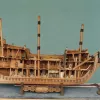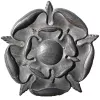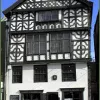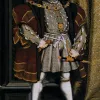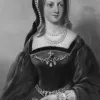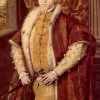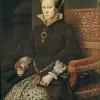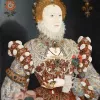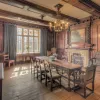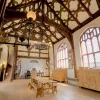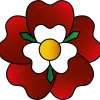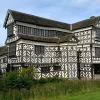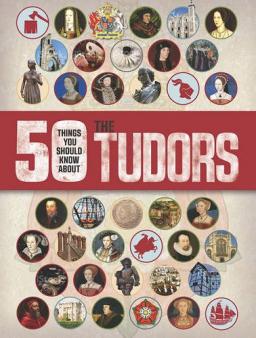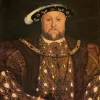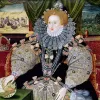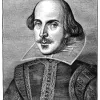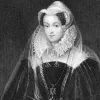Important update from TheSchoolRun
For the past 13 years, TheSchoolRun has been run by a small team of mums working from home, dedicated to providing quality educational resources to primary school parents. Unfortunately, rising supplier costs and falling revenue have made it impossible for us to continue operating, and we’ve had to make the difficult decision to close. The good news: We’ve arranged for another educational provider to take over many of our resources. These will be hosted on a new portal, where the content will be updated and expanded to support your child’s learning.
What this means for subscribers:
- Your subscription is still active, and for now, you can keep using the website as normal — just log in with your usual details to access all our articles and resources*.
- In a few months, all resources will move to the new portal. You’ll continue to have access there until your subscription ends. We’ll send you full details nearer the time.
- As a thank you for your support, we’ll also be sending you 16 primary school eBooks (worth £108.84) to download and keep.
A few changes to be aware of:
- The Learning Journey weekly email has ended, but your child’s plan will still be updated on your dashboard each Monday. Just log in to see the recommended worksheets.
- The 11+ weekly emails have now ended. We sent you all the remaining emails in the series at the end of March — please check your inbox (and spam folder) if you haven’t seen them. You can also follow the full programme here: 11+ Learning Journey.
If you have any questions, please contact us at [email protected]. Thank you for being part of our journey it’s been a privilege to support your family’s learning.
*If you need to reset your password, it will still work as usual. Please check your spam folder if the reset email doesn’t appear in your inbox.
The Tudors
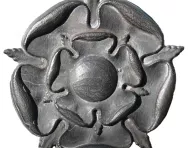
Who were the Tudors?
Kings and queens in the Tudor family ruled England from 1485-1603. Both King Henry VIII and Elizabeth I belonged to the Tudor family.
During the time that the Tudor kings and queens reigned, a lot was happening in England. People were discovering more about the world through exploration, the Church of England was founded, England got a good reputation for having a strong Navy, more people were able to go to school and learn lots of different things, and art and music became an important part of culture.
Top 10 facts
- There were six Tudor monarchs (kings and queens).
- The first Tudor monarch was King Henry VII who was crowned in 1485, and the last was Queen Elizabeth I who ruled from 1558 to 1603.
- Because Elizabeth I didn’t have any children, when she died in 1603 her cousin James I became king, uniting England and Scotland and starting a new royal family – the Stuarts.
- Religion was very important in Tudor times. Everyone had to go to church, and it was best if you went to the same sorts of churches that the king or queen did.
- If you were a Catholic when Henry VIII was king, or a Protestant when Mary I was Queen, you might get arrested, thrown into the Tower of London, or even executed!
- Mary I had over 280 people put to death because of their religion (she was Catholic), so she got the nickname ‘Bloody Mary’.
- It wasn’t all bad in Tudor times, though. Music and dances were very popular, and people practised their instruments so they could become good enough to play in the royal court.
- Music was enjoyed by everyone, no matter which class they came from – gentlemen, citizens of the cities, yeomen of the countryside, and the poor.
- Theatres were also very popular in Tudor times, which is how William Shakespeare got to be so famous for the plays he wrote. Both rich and poor people went to the theatre.
- Executions and punishments were another form of entertainment in Tudor times. Lots of people would gather to see someone burned at the stake or beheaded, which doesn’t sound very fun today!
Timeline
- 1455-1485The War of the Roses took place between the houses of York and Lancaster
- 22 August 1485Henry Tudor won the Battle of Bosworth Field, which ends the War of the Roses. He also declares himself king from this date
- 28 June 1491Henry VIII was born at Greenwich Palace
- 21 April 1509Henry VII died
- 24 June 1509Henry VIII was crowned king
- 18 February 1516Mary I was born in Greenwich
- 7 September 1533Elizabeth I was born in Greenwich
- 12 October 1537Edward VI was born at Hampton Court Palace
- 28 January 1547Henry VIII died
- 20 February 1547Edward VI was crowned king
- 6 July 1553Edward VI died
- 10 July 1553Lady Jane Grey became queen, as Edward VI wanted
- 19 July 1553Mary I was proclaimed Queen instead of Lady Jane Grey
- 1 October 1553Mary was officially crowned Queen
- 12 February 1554Lady Jane Grey was executed
- 17 November 1558Mary I died at St. James’s Palace
- 15 January 1559Elizabeth I was crowned queen
- 24 March 1603Elizabeth I died
- 29 July 1567Elizabeth’s cousin, James VI of Scotland, was crowned king – he is also known as James I of England; this ended the Tudor family line, as James belonged to the House of Stuart


Boost Your Child's Learning Today!
- Start your child on a tailored learning programme
- Get weekly English & maths resources sent direct to your inbox
- Keep your child's learning on track
Did you know?
- People in Tudor times ate their main meal in the middle of the day – around when we’d eat lunch. Their main meal could last for three hours!
- People baked by putting food in an iron box, and placing it on an open fire.
- In Tudor times, meat was cooked on a spit – it could be turned around and around over the fire so the meat cooked on all sides.
- People used honey to sweeten food instead of sugar.
- Children who were naughty at school would be beaten with a cane – boys from rich families would sometimes pay for another boy to get beaten instead. Imagine having that job!
- If people felt sick, they wouldn’t take the medicines that we take today. Some of the cures they used sound funny to us now – for example, bald people thought they could grow hair if they used a shampoo made from crushed beetles!
- Tudor towns and villages weren’t very clean. People threw rubbish in the street, and even emptied the loo there! It was very smelly.
- People didn’t usually live to be older than age 35 in Tudor times.
- Ships built in Tudor times were called galleons.
- The Tudor monarch with the shortest rule was Lady Jane Grey – she was Queen for just nine days! She was in the Tower of London the whole time.
Can you find all the following in the gallery below?
- A model of an English galleon, and what it would have looked like inside:
- The Tudor rose
- Tudor houses that are still around today
- Henry VII
- Henry VIII
- Lady Jane Grey
- Edward VI
- Mary I
- Elizabeth I
- A Tudor room at Turton Tower
- Tudor interiors in Salford, Manchester
- The Tudor rose
- Little Moreton Hall in Cheshire
Gallery
About
The Tudors became royalty after winning the Battle of Bosworth Field in 1485, which ended the War of the Roses between the House of Lancaster and the House of York. Henry Tudor led the fight on the Lancaster side, and then married Elizabeth of York.
The civil war between the House of Lancaster and the House of York was called the War of the Roses because each side had a certain colour of rose to represent them – red for Lancaster and white for York. The Tudor rose is both red and white, symbolising that the two houses were joined together.
While Henry VIII wanted his daughter Mary to become queen after his son Edward VI, Edward decided on his deathbed that he wanted Lady Jane Grey to rule instead because she was Protestant, like him. Mary was a Catholic. Jane Grey did become queen, but only for nine days, and she was never officially crowned – Mary became queen instead, and had Jane executed.
The kings and queens in Tudor times were very involved in religious matters. Everybody had to go to church, and whether you were Catholic or Protestant was very important. It sometimes meant the difference between life and death!
Henry VIII set up the Protestant Church of England, which meant England broke ties with the Catholic church. This also meant that Catholics weren’t very popular in England – some were even put to death. But, when Mary I became Queen it was the other way around – her mum, Catherine of Aragon, was Catholic and Mary was Catholic too. She had over 280 people put to death because of their religion, which gave her the nickname ‘Bloody Mary’.
After Mary, Elizabeth I (a Protestant) became Queen.
Some of the games played in Tudor times are games we still play today, such as bowls and tennis. The version of tennis played by Tudors was called ‘paume’.
A lot of what we know about what people would have had in their homes during Tudor times is from inventories, which are lists of possessions that people had when they died.
Music was very popular in Tudor times, and it was a large part of entertainment both in the royal court as well as for the peasants. It also meant that somebody from any class – rich or poor – who was good enough at an instrument could have the chance to play for the king or queen! Musical instruments played include the viol, hautboy, harpsichord, spinet and virginals.
According to someone who lived during Tudor times, William Harrison, there were four different classes in society:
- gentlemen (nobles and professionals)
- citizens of the cities (people who were free, not slaves, and who had special rights)
- yeomen of the countryside (people who were free, not slaves, and could run cities and farms in the country)
- poor (slaves, farm workers, and vagrants who didn’t have a home and lived on the streets)
School could be expensive, so only people who could pay for it would send their children. At grammar school, they’d learn maths, Latin and Greek, and about religion. Only boys went to school, though sometimes girls from rich families would have tutors. When Edward VI was king, some schools were set up that didn’t cost anything so more people were able to be educated.
Jobs that people would have had in Tudor times include being a butcher, baker, weaver, fishmonger (catching and selling fish), tailor, blacksmith, shoemaker and washerwoman. There were different kinds of jobs in the royal court that involved serving the king or queen, such as being a page or a lady in waiting.
If you did something wrong and broke the law in Tudor times, you could get a pretty harsh punishment. If any of these happened to you, you’d been let off easy: whipping, being branded with a hot iron, and being locked in between bits of wood in the centre of town for people to laugh at you. The worst punishments were executions, such as beheading, being hung, being burned at the stake, or being boiled alive. Executions were public events that lots of people would come to watch.
Names to know:
King Henry VII (1457-1509) – Henry VIII was the first Tudor king, and ruled from 1485-1509. He won the Battle of Bosworth Field, which ended the War of the Roses.
King Henry VIII (1491-1547) – King Henry VIII ruled from 1509-1547. Find out more about him here. //crosslink//
King Edward VI (1537-1553) – King Edward VI ruled from 1547-1553. He was only nine when he became king, and he died at age 15 from a disease in his lungs. He wanted Lady Jane Grey to become Queen next instead of his older sister, Mary, because Jane was a Protestant like Edward.
Lady Jane Grey (1536 or 1537-1554) – Lady Jane Grey was Queen from 10-19 July in 1553. Even though she was legally Queen because King Edward VI had made it so, Edward’s sister Mary took over the throne and eventually had Jane executed. In fact, Jane had been locked in the Tower of London during the nine days she was Queen.
Mary I (1516-1558) – Mary I was Queen from 1553-1558. She was a devout Catholic and was very strict about people following the same faith – so strict, that she’d have Protestants executed. She was called ‘Bloody Mary’ because of this. Mary married King Philip II from Spain, and they didn’t have any children.
Queen Elizabeth I (1533-1603) – Queen Elizabeth I ruled from 1558-1603.
William Shakespeare – William Shakespeare was a famous playwright during Tudor times.
Related Videos
Just for fun...
- Watch Horrible Histories clips about Tudors: King Henry VIII, Henry VIII's wives, Lady Jane Grey and Elizabeth I
- Make Tudor smartard, sweet cottage cheese fritters
- Listen to some Tudor music
- Try a Tudors Grid Club game
- Complete a Tudor trivia quiz
- Dowload colouring sheets of Tudor rulers and everyday life
- 'Listen' to life in Tudor times with a collection of comic sketches, short dramas and music from BBC Schools Radio. Topics include rich and poor in Tudor times, ships and seafaring, medicine, the Elizabethan stage and life in the reigns of Henry VIII and Elizabeth I.
- Watch a step-by-step video on how to make a traditional Tudor Cheese Tart
- Make your own Tudor house, Tudor crown and Tudor rose with step-by-step instructions and videos from Hobbycraft
Children's books about Tudors
Find out more:
- A children's guide to Tudor life from DKfindout!
- Read 10 fast facts about the Tudors
- Watch videos about life in the Tudor times, including Tudor merchants' lives, Tudor children's lives and Tudor housewives' lives
- A timeline of Tudor monarchs
- Read about strange and gruesome cures in Tudor times
- Find out about Tudor buildings and houses in an architecture podcast from FunKids
- Read fictional stories for children set in Tudor times
- Discover more about Tudor health
- Learn amazing facts about Tudor food
- Read all about Shakespeare's Globe
- Look at a portrait of Henry VIII's family
- Meet the crew of the Tudor ship the Mary Rose
- Examine Tudor objects including a sand shaker, a wooden trencher (plate) and a lantern
- Read a children's magazine about Tudor England
See for yourself
- Visit a replica of the Globe Theatre, where Shakespeare’s plays were performed – it’s very near the spot where the real Globe Theatre once stood
- See Hampton Court Palace, where Henry VIII lived
- Explore the Tower of London, and find out more about crime and punishment in Tudor times.
- Visit Framlingham Castle, where Mary I stayed before she became Queen.
- Henry VIII built Pendennis Castle as a fortress to ward off enemies from France and Spain.
- Lots of Tudors are buried in Westminster Abbey, with very ornate graves, but Henry VIII is buried at Windsor Castle
